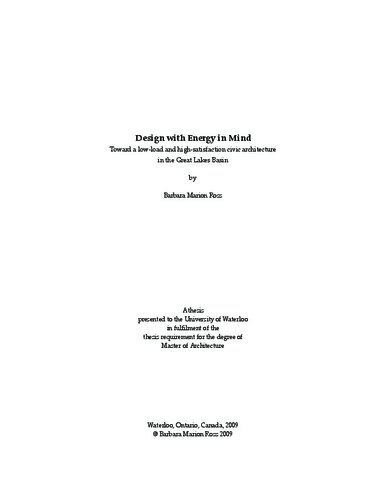| dc.description.abstract | This study demonstrates how much impact an architect can have on the environmental loads imposed by a building, through fundamental choices of building form, proportion, orientation, and enclosure design. It also offers certain insights about energy flow in mid-sized, non-residential civic buildings that are essential to making the most effective decisions, early in the design process. The research rests upon an assumption that a “new normal” is required, urgently, in civic architecture in North America. This “new normal” would impose very low loads on natural systems, while being richly satisfying to human interests. The design approach may contrast substantially, to the standard approach taken during the last 50 years. To achieve an architecture that is both low-load and high-satisfaction, new information is needed by an architect in consulting practice. Research into the study questions proceeds through a series of complementary exercises. First, an inquiry is made into current issues, from the point of view of a consulting design practitioner. Next is an examination of best practices in relevant case studies, in northeastern regions of North America. This illustrates the range of approaches being taken, and the type of results being realized. The “new normal” designs reveal synergies and risks when “low load” and “high satisfaction” goals are present in the same project. Following this, there is a study of the energy flow that results from the manipulation of fundamental parameters in an office building, or headquarters of a civic administration agency. Here, the power of each parameter – including form, orientation and façade design – is measured. Finally, to reflect upon the lessons learned, suggestions are made with respect to needed interventions in everyday practice, in the Great Lakes Basin. In the course of this research, several design aides have been developed and tested, such as the Questions of Design Quality, the Intensometer, and the Strategy Grid. Any of these might be re-tailored to any building type in any climate. Here, they are applied in the design of non-residential civic buildings in a cool-humid climate. The observations made in this study comprise a reference handbook - offered for use by students, consulting architects, and building owners, during the earliest stages of design. | en |

